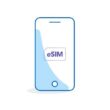After starting construction work on their LTE network back in May 2010, Telstra finally started trialling their network, starting with business customers in August, and finally launching it for consumers with the Sierra AirCard 320U USB modem. While only officially offered on a 24 month contract, it’s been available for purchase outright (for ~$299AUD). Following on from the AirCard, the HTC Velocity 4G was released in late January. More recently, they also just launched the first LTE tablet – the Samsung Galaxy Tab 8.9 running Android, and, another USB modem – the ZTE MF821.
What makes the MF821 special for people wanting to buy it, is it’s being targeted towards the prepaid market. As mentioned above, it’s always been possible to purchase the AirCard 320U outright and then throw a prepaid SIM in there, $299 was quite pricey for the average joe. Telstra have priced the MF821 at $129, which in my opinion is a steal. You also get 3GB to use in the first 30 days from activation.
Picking one up on launch day was tricky – while the product was launched Wednesday with an availability of ‘today’, only 2 of the 5 Telstra stores I visited had them in stock, let alone had heard of them. After finally hunting one down, I was in business. The store assistant even offered to activate it for me on the spot.
If you haven’t heard of LTE (also known as 4G) before, it’s the next generation of wireless networks – in real world situations it’s at least twice as fast as 3G. Telstra have been rolling out this network to compliment their existing Next G 3G network in capital cities, until enough spectrum is available to roll it out to the rest of Australia.
The box features Telstra’s distinctive new ‘rainbow colours’ branding so it’s pretty hard to miss. In terms of what’s in the actual box, you’ll find the white modem itself, an adhesive strip in the event you wish to mount it somewhere (a window, your laptop, etc), a short extension lead, your Telstra prepaid welcome guide and a modem quick start guide.
Installation was a breeze – as with most things these days, it was plug and play. After plugging it into my MacBook, it showed up as a USB drive containing the installer. Took a few minutes, and after a reboot I was up and running.
Getting service in Newtown. NSW was no problem – being within Telstra’s LTE coverage zone (typically 5km from CBD areas and major centres. You can check here.)
Of course, first thing I tried was a speed test.

Wow. This thing is fast. Like, crazy fast. I did a few more, and they’ve all been pretty consistent.
Over the last few days, I’ve tried it in a few more places. With two bars of LTE according to the connection manager in Randwick, NSW I managed the still reasonable:

While not as fast as LTE in Newtown, it’s still faster than 3G (tethering from my iPhone) and the slow ping/latency really makes a difference.
In the Sydney CBD, at Starbucks on the corner of Park and Elizabeth St, I managed

and other tests were pretty consistent.
The modem itself is quite decent for networks in use today, and hopefully into the future.
One of my favourite features is the ‘rotating USB’ plug – which means it can be tilted and rotated to suit. Perfect when you’re using a MacBook Pro and would like use of your two USB ports without the modem blocking the other.
In terms of specifications, it’ll run on all 3G networks in Australia – Telstra’s 850mhz Next G network, Optus/Vodafone’s rural 900mhz network, and everyones’ 2100mhz metro networks.
4G LTE 1800, 2100, 2600 MHz
3G UMTS 850, 900, 2100 MHz
GSM 850, 900, 1800, 1900 MHz
It features a microSD card slot, if you want to use the device as a card reader.
It also features dual external antenna sockets.
Typical LTE download speeds are advertised at between 2 and 40Mbps, with a theoretical maximum of 100Mbps.
When you’re outside a Telstra LTE coverage area, the modem also supports DC-HSPA+, meaning you’ll get faster 3G speeds than other modems and devices, with a theoretical maximum of 42Mbps.
Overall, I think this device is a steal at $129 with 3GB of data included. If you need mobile broadband occasionally, usually around capital cities and major regional centres, you’ll love having LTE support. The speed difference between that and 3G is crazy noticeable.
If you wish to use it on other networks in Australia and overseas, Telstra will unlock the device for $100.
The Telstra Pre-Paid USB 4G is available now in Telstra stores and retailers, in addition to online.


















Well …I sure can’t get mine to work properly .
Got the latest software , roof mounted antenna ,tried every Phillipino telstra call phone expert , LOOKED AT 500 WEB SITES .
Running osx lion 10.8 .
Thinking of having my macbook exorcised.
Cheers Glenn SA